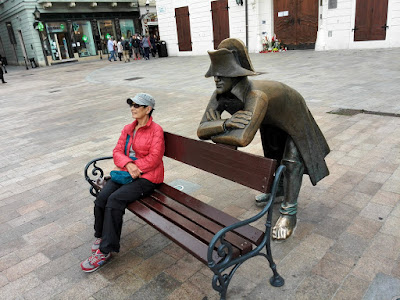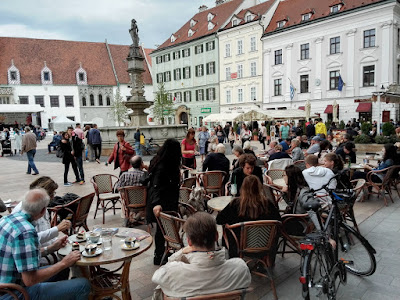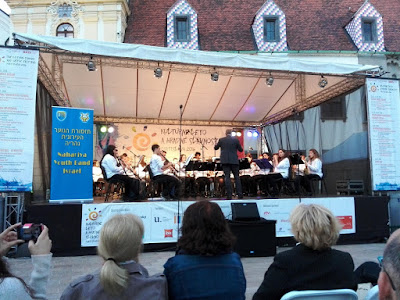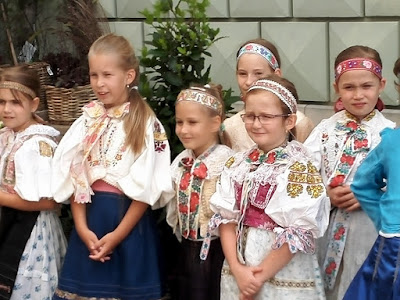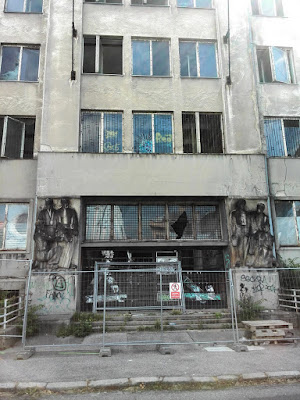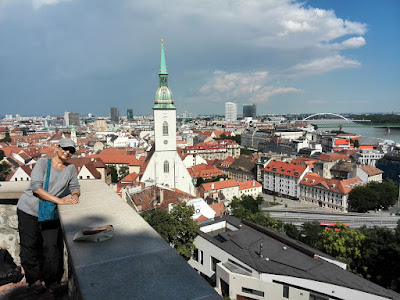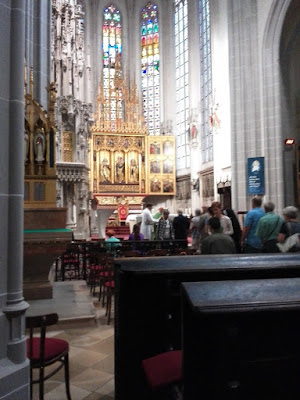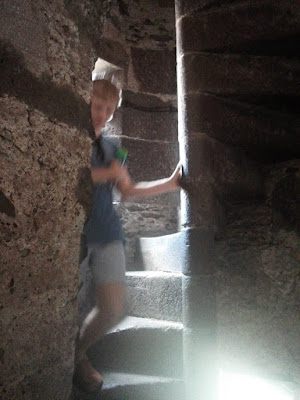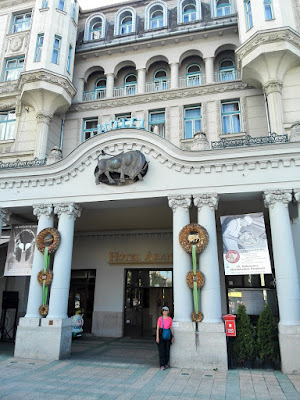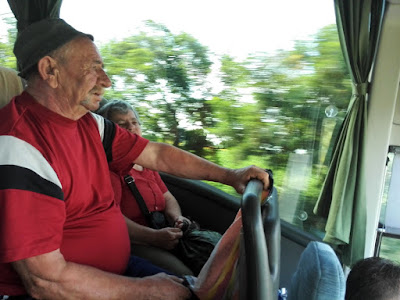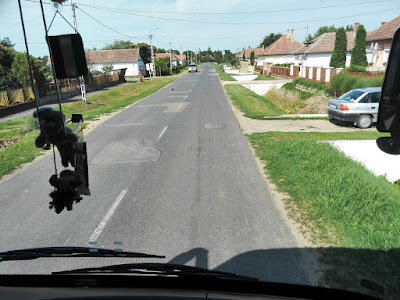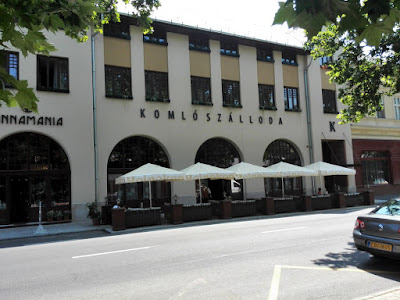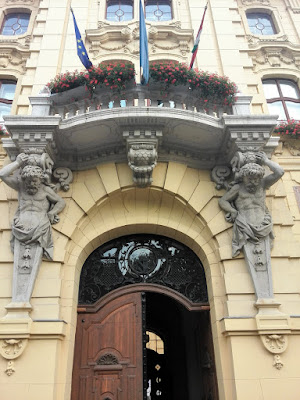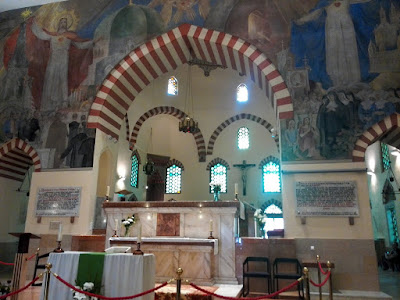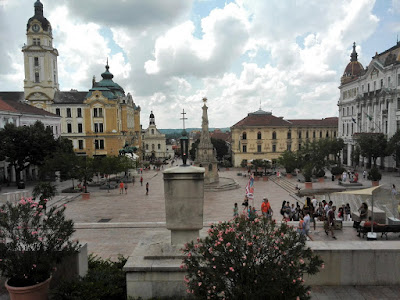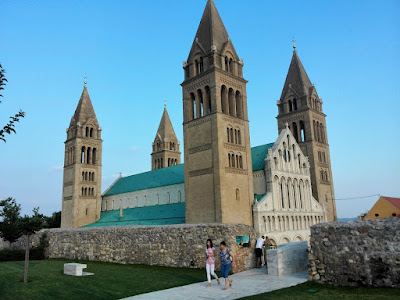Gentlefolk,
In July 2016, after 6 years teaching English in China we decided to "call time-out". While we had a great time in China, I was about to turn 70 and we felt it was a good time to head back Down Under.
First we had 3 weeks travelling around Hungary (10 - 31 July, see Posts #119 & #120) followed by 4 weeks in Germany (1 - 31 August 2016).
The places we visited in Germany, in order, were: Dresden, Berlin, Hamburg, Bonn, Karlsruhe, and Weilheim (my birthplace, near Munich).
This was the first time we had really spent time in Hungary (my father's birthplace); my mother was from Germany and we had visited relatives there fairly frequently over the years, but two of the places we visited this time were new to us (Berlin and Hamburg).
 |
| Map of Germany and surrounding countries. We took a train from Budapest (Hungary) to Dresden. In Germany we did a big anti-clockwise circle, starting in Dresden, then Berlin, Hamburg, Bonn, Karlsruhe, and finishing up in Munich.. All the cities we visited are shown on the map, except Karlsruhe which is located between Mannheim and Stuttgart. |
I think I'll do a series of short posts to describe our month in Germany. This post has photos of our time in Dresden.
 |
| Map of the Center of Dresden; the Old City and New City separated by the Elbe River. Our hotel was on Ostra Allee not far from the Zwinger Palace/Museum. |
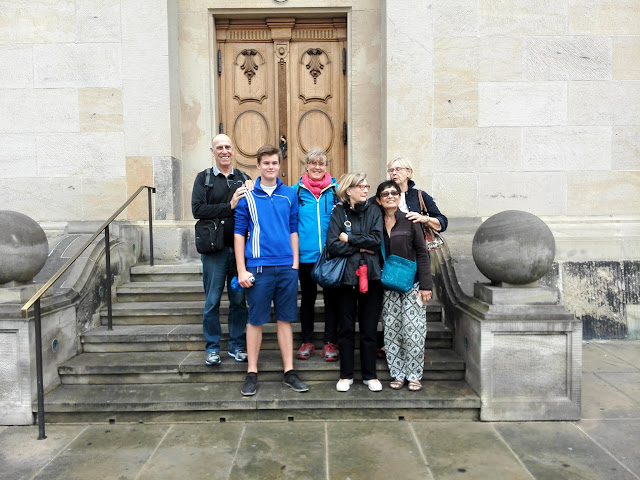 |
| Our group in Dresden, from left: me; Claudius (Marion's son); Marion (Oda's daughter); Heidi; Vera; Oda. My cousins, Heidi and Oda decided to meet us in Dresden and show us around. They live in Weilheim, about 50 km south of Munich. Our mothers were sisters (nee Goerner), were born and grew up in Dresden. After WW2 their parents sought refuge in the American Zone and they ended up living in the small town of Weilheim (20,000+ inhabitants now). They both moved away when they got married, but retired in Weilheim. After Reunification the family visited Dresden several times and knew the place well. We were very lucky to have such good "guides" to show us around Dresden. |
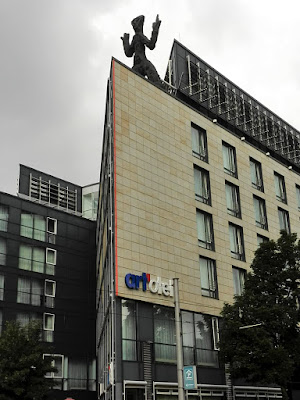 |
| We all stayed in the Art'otel, a very comfortable 3 star hotel conveniently located only about 500 m from the Zwinger, one of the famous Palaces of Dresden. A Double Room was 88 euro a night, and included a wonderful buffet breakfast. |
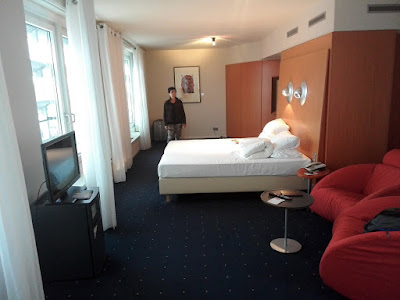 |
| When we arrived at the Art'otel on 1 August they told us all normal double rooms were full, and that we were upgraded to a Junior Suite. We took the change in good grace and enjoyed the luxury! |
 |
| Dresden was the capital of the Kingdom of Saxony and has many fine old buildings. |
 |
| One of the many impressive statues around the Old City. |
 |
| This amazing mosaic is almost 100 m long. It portrays important event in Dresden's history. |
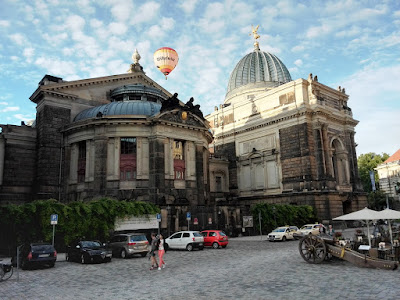 |
| Hot air ballons flying over the Old City. |
 |
| We came across this Anti-immigrant (refugee) demonstration in the main square. About 100,000 refugees were flooding into Germany per month, mainly from Syria and Iraq. Right wing political parties tapped into the consternation among the German population at this sudden influx of foreigners. A huge statue of Martin Luther is in the center of this square - this part of Germany is predominantly Protestant (Luthern). But the interior of the churches are quite ornate. |
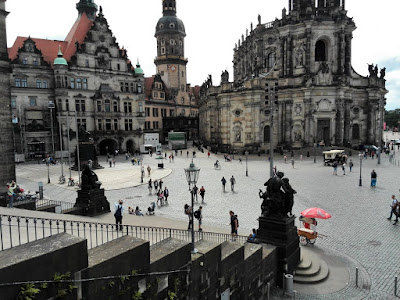 |
| Another part of the Old City of Dresden. |
 |
| An ancient bridge across the Elbe River to the "New City". |
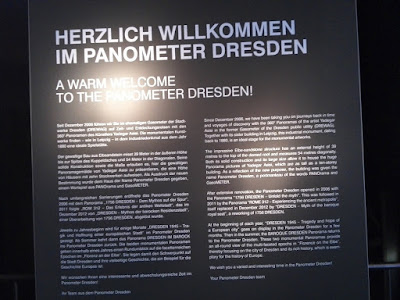 |
| We visited the "Panometer Dresden" in the city's old gas works which were built in 1888 and decommissioned about 20 years ago. It shows huge pictures of what Dresden was like in 1756 (Baroque Dresden) in 360 degrees (see next two photos). Fascinating - the wonders of computers. |
 |
| One of the 'panoramas' of old Dresden. |
 |
| Another 'panorama' - of the bridge as it might have been 250 years ago (see modern photo of this bridge above). |
 |
| My mother (and her sister) was born and grew up in the second floor apartment in this building. Fortunately it was about 4 km from the Old City which was largely destroyed by massive Allied bombing on 13 February 1945, so this building survived the attack. My mother was conscripted and worked as a secretary in a radar station on the North Coast. In March 1945 the Commander of the Radar Station announced that the war was lost, shut down the operations, and sent everyone packing. Somehow my mother manged to get back to Dresden only to find her beloved city destroyed but at least her immediate family had survived. With the Soviet Army closing in, the family managed to flee to Bavaria which had been occupied by the American Army and was seen as a better option. |
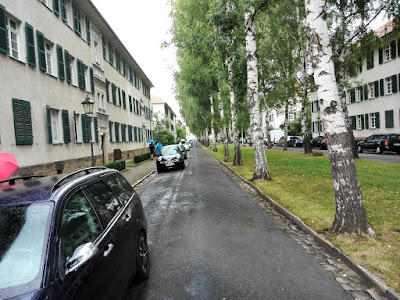 |
| The street outside the front of the apartment building where my mother grew up. |
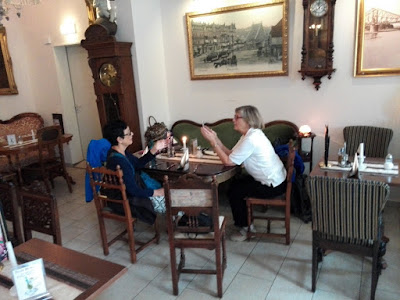 |
| We had Kaffee und Kuchen at the lovely Antik Cafe in Schiller Platz. |
 |
| Another photo of the Antik Cafe which was both a restaurant and antique shop. |
 |
| Schloss Albrechtsberg on the Elbe. We caught a tram to Schiller Platz, then took the old cog railway up to Weisse Hirsch Lookout - great views of the Valley and Dresden - then another tram to this castle. A number of Manor Houses and castles have been converted into museums and conference centers. |
 |
| An impressive statue of King Augustus of Saxony, at one of the the bridge across the Elbe. |
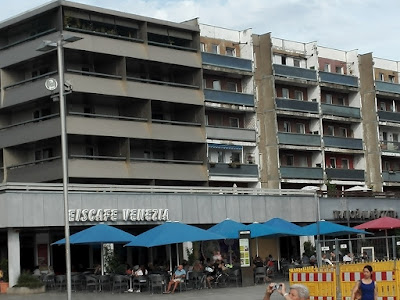 |
| An interesting apartment building in the New City, near the statue of King Augustus (above). A modern section has been tacked on to the original (Soviet era) structure which is still in its previous state. |
 |
| These sophisticated scientific instruments (astronomy) were made 500 years ago - incredible craftsmanship. |
 |
| The town of Meissen, near Dresden, is famous for its porcelain, including Chinese patterns. |
 |
| Another amazing example of Meissen porcelain. Beautiful. |
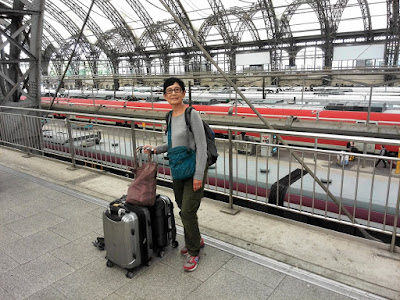 |
Saturday 6 August 2016 Vera at Dresden Railway Station. After 5 enjoyable days exploring this wonderful city we took a train to Leipzig (looked around the Old City for 3 hours) and then another train to Berlin.
|
And so ended a memorable visit to Dresden, my mother's home town. She sometimes spoke of its beauty and charm - now I understood a little better what her young life had been like.
We had visited Dresden once before, in mid-1989; a two day visit was planned, but aborted after just 24 hours because we were so disappointed: Dresden then was depressing, surly people, awful food, poor accommodation, dreadful service.
Little did we know that just 4 months later the Berlin Wall would fall and talks commence on the reunification of East & West Germany.
We found a completely different Dresden this time. Amazing transformation.
...
The next post will describe our visit to Berlin.
...
Best wishes, keep well and keep smiling.
Alex & Vera Olah
Canberra, Australia
Sunday 26 February 2017
(Currently visiting our daughter and her family in Brisbane).


























